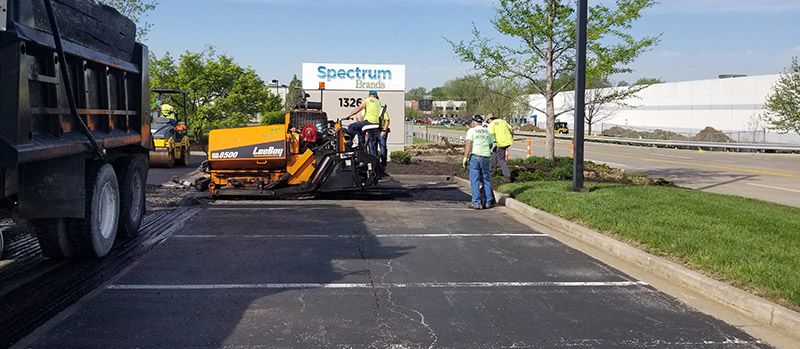The Ultimate Guide To A1 Professional Asphalt & Sealing Llc
The Ultimate Guide To A1 Professional Asphalt & Sealing Llc
Blog Article
Some Ideas on A1 Professional Asphalt & Sealing Llc You Should Know
Table of ContentsThe Only Guide to A1 Professional Asphalt & Sealing LlcThe Ultimate Guide To A1 Professional Asphalt & Sealing LlcEverything about A1 Professional Asphalt & Sealing LlcIndicators on A1 Professional Asphalt & Sealing Llc You Need To KnowNot known Facts About A1 Professional Asphalt & Sealing Llc
In its structure, asphalt consists mostly of Bitumen combined with various kinds of accumulation, such as sand or crushed rock. Sidewalk, conversely, is a sort of concrete which contains aggregates, concrete, and water. asphalt paving repairs. Depending on the place and use of the utilized sidewalk product, a blend of various chemical admixtures might be included to make it more resilient
What is the difference between asphalt and blacktop driveways? Blacktop is a mix of rock, sand, and crushed rock topped with asphalt. Blacktop is developed to create an also surface area as a result of its boosted resistance to weathering and capability to bear heavier lots. What is the distinction in between asphalt concrete pavement and concrete? Pavement can be made of either asphalt or concrete, with asphalt being smoother and much more durable as a result of its binder, while concrete hardens through the treating procedure but tends to put on down in time as a result of weathering.
What Does A1 Professional Asphalt & Sealing Llc Do?
Just how do I maintain my asphalt driveway? The most crucial component of keeping an asphalt driveway is making certain it's effectively secured.
Asphalt and pavement are conventional fixtures on roads everywhere. Regardless of their similarities, these 2 materials have some necessary distinctions that make each appropriate for various scenarios.
Recognizing these differences can aid make certain an appropriate choice is made when picking a surface area solution. You can find out more write-ups such as this one right here.
Unknown Facts About A1 Professional Asphalt & Sealing Llc
Just recently, State highway agencies and FHWA were amazed by a discovery: The private use re-refined engine oil bottoms in asphalt is extensive. Simon Hesp, Queens College (Kingston, Ontario) Asphalt is the sticky black deposit that is left over from the processing of unrefined oil. It has actually been utilized in leading for greater than a hundred years.

The asphalt, which acts as the sidewalk's binder, is also one of the most pricey part of the cost of the material for leading roadways. The weight of an asphalt pavement varies depending upon the aggregate kind, the asphalt, and the air space material. Using an ordinary example of 112 pounds per square backyard per inch of thickness, a 1-mile (1.6-kilometer)-long, four-lane highway with a look at this site 4-inch (10-centimeter) lift and 12-foot (3.6-meter)-large lanes weighs regarding 6,300 lots (5,700 metric bunches).
The 300 tons of asphalt in 2002 would certainly have cost around $48,000. The rising cost of asphalt had a significant impact on the cost of creating sidewalks, which enhanced interest in locating means to lower prices.
Some Known Factual Statements About A1 Professional Asphalt & Sealing Llc
RAP currently contains asphalt, albeit aged product that does not have the very same properties of fresh asphalt. Throughout a corridor discussion at a 2010 technological meeting, Matt Mueller, then a State engineer of products from Illinois, revealed that his division of transportation had discovered phosphorous in among the asphalt binders it was acquiring.

The supplier rejected adding PPA, but decreased to reveal what had been contributed to the binder. When pushed by the division of transport, the supplier exposed that it was including what it called an asphalt extendernow understood to be re-refined engine oil bottoms (REOB). REOB consists of a small quantity of phosphorus, which is what division chemists originally determined.
"No one understood this product was being included to asphalt, had seen any study on exactly how this might impact performance of hot-mix asphalt pavements, or knew for the length of time and exactly how commonly it was being used throughout the country," claims Mueller. After discussions at the technical conference, he claims, "It promptly went from being simply a concern in Illinois to coming to be a nationwide and global issue." Component of the objective of the Chemistry Lab at TFHRC is to establish new test approaches.
The properties of asphalt binders differ widely depending on the source of the unrefined oil and the refining procedure used. For reduced winter season temperature levels, softer asphalts are essential to stay clear of cracking.
An Unbiased View of A1 Professional Asphalt & Sealing Llc
A maker called a vibrant shear rheometer (DSR) was introduced to the market throughout the Strategic Highway Research Program's research project, which ranged from 1987 to 1992. The DSR is currently the market criterion for gauging the viscoelastic buildings of leading asphalt. The maker was not established for the paving market (https://a1asphaltseal.bandcamp.com/album/a1-professional-asphalt-sealing-llc).
For instance, the DSR enables item programmers to produce tooth paste with the best uniformity so that it can be pressed from a tube but not drop off the tooth brush. The DSR examinations binder positioned in between 2 parallel plates concerning the size of a quarter. One of home plates steps and the maker determines the viscoelastic residential or commercial properties of the asphalt.
Report this page